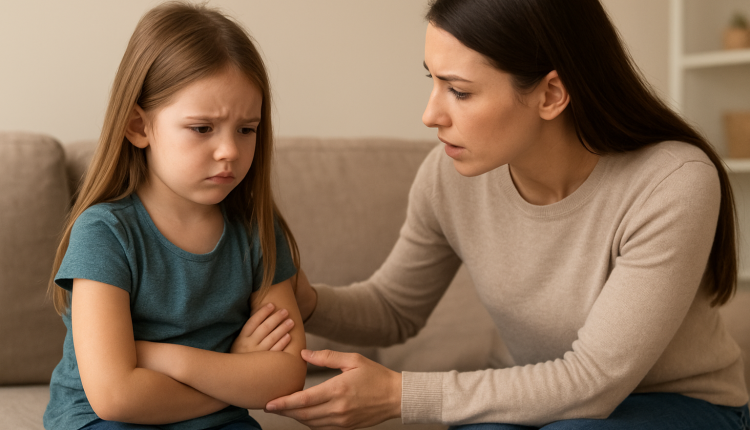Childhood anxiety is a natural part of growing up. From fear of the dark to worries about school or friendships, children encounter numerous situations that challenge their emotional balance. However, when these fears become overwhelming or persistent, they can interfere with a child’s ability to learn, play, and connect with others. In recent years, psychologists have observed an increase in anxiety levels among children, driven by academic pressure, overstimulation, and even exposure to global uncertainty through media.
Helping children manage anxiety does not require clinical therapy in every case. Parents and caregivers can create supportive environments and use practical, science-backed techniques at home to teach emotional regulation, build confidence, and prevent fears from escalating. The goal is not to eliminate all anxiety but to help children understand and navigate it effectively.
Recognizing Anxiety in Children
Before applying techniques, it’s crucial to identify signs of anxiety. Unlike adults, children may not always express their emotions verbally. Their anxiety can manifest through physical symptoms such as stomachaches, headaches, difficulty sleeping, irritability, or avoidance of certain situations.
Common triggers include changes in routine, school performance pressure, separation from parents, or social interactions. Recognizing these signs early allows parents to respond with empathy rather than discipline or dismissal. Anxiety is not misbehavior — it is the body’s response to perceived threat or stress.
The Role of Emotional Validation
One of the most powerful tools parents can use is emotional validation. When a child expresses fear or worry, responding with understanding rather than minimization builds trust. Phrases like “There’s nothing to be afraid of” can unintentionally make a child feel misunderstood. Instead, parents can say, “I understand that you feel scared. Let’s figure out what we can do together.”
Validation helps children accept their emotions as normal and manageable. It teaches that fear is a signal to listen to, not something to suppress. Over time, this foundation of acceptance creates resilience and emotional awareness.
The Calm Corner: Creating a Safe Emotional Space
A simple yet effective technique for managing anxiety at home is creating a calm corner — a dedicated space where children can retreat to regulate emotions. This is not a “time-out” zone but a comforting environment filled with calming objects such as soft pillows, sensory toys, books, or even soothing lights.
Parents can encourage children to visit this space when they feel overwhelmed. Over time, they learn to recognize early signs of distress and take proactive steps to calm themselves — a skill that translates into lifelong emotional intelligence.
To make it effective, let the child participate in setting up the space. When they choose the colors, textures, and items, it becomes a personalized refuge rather than a prescribed solution.
Breathing and Body Awareness Techniques
Deep breathing is one of the most accessible and effective tools for reducing anxiety, and children can learn it surprisingly early. Parents can introduce exercises like “balloon breathing” — asking the child to imagine inflating a balloon in their belly as they inhale slowly, then deflating it as they exhale.
Another playful technique is “square breathing,” where the child visualizes drawing a square in the air: inhale for four counts, hold for four, exhale for four, and pause for four. Doing this together turns the exercise into a shared ritual rather than a task.
Body awareness techniques, such as progressive muscle relaxation, also help children release physical tension. Parents can guide them to tighten and then relax muscle groups from head to toe, describing it as “melting ice” or “squeezing lemons” to make the process engaging and tangible.
Externalizing Fear Through Creativity
Children often struggle to articulate their fears, but they can express them through art, storytelling, or play. Drawing what scares them, creating stories about their fears, or assigning those fears a name or shape helps externalize anxiety.
For example, a child afraid of the dark might draw a “shadow monster” and then decorate it with funny features to make it less threatening. This transforms fear from something abstract and uncontrollable into something visible and manageable. Parents can then guide the child to think of ways to “befriend” or “shrink” their fear, reinforcing the message that they have power over it.
Building Predictability and Routine
Anxiety thrives in uncertainty. Establishing clear daily routines provides children with a sense of structure and control. Predictable patterns for meals, bedtime, and homework reduce mental load and help the brain feel safe.
However, flexibility within structure is important — routines should not become rigid. Parents can prepare children for changes ahead of time (“Tomorrow we’ll visit a new park. It might look different, but we’ll go together and explore”) to help them develop adaptive confidence in new situations.
Modeling Calm Behavior
Children absorb emotional cues from adults. When parents respond to stress with calm and problem-solving rather than panic or avoidance, children learn to do the same. This doesn’t mean hiding emotions — it means demonstrating healthy coping strategies. Saying, “I feel nervous too, but I’ll take a deep breath and figure it out,” normalizes vulnerability and resilience.
Consistency is key: the calmer the adult presence, the more secure the child feels. Even brief moments of connection — a hug, a reassuring glance, or a few words of encouragement — can anchor a child during anxious moments.
Using Mindfulness and Grounding Techniques
Mindfulness is not only for adults; children can also benefit from learning to focus on the present moment. Simple grounding exercises, such as the “5-4-3-2-1” technique, help redirect attention away from overwhelming thoughts. The child identifies five things they can see, four things they can touch, three things they can hear, two they can smell, and one they can taste.
Mindfulness activities like noticing the rhythm of breathing, listening to nature sounds, or feeling the texture of an object train the brain to shift focus away from fear-based thoughts and toward sensory experience. Over time, this strengthens emotional regulation and awareness.
Encouraging Problem-Solving and Confidence
Fear often arises from feelings of helplessness. Teaching problem-solving helps children regain control. Parents can guide them through questions such as:
- What exactly are you worried about?
- What could help you feel safer or more confident?
- What small step can we take together to make it better?
Breaking problems into manageable parts turns anxiety into action. Each small success reinforces the child’s ability to face challenges, building resilience that extends into adolescence and adulthood.
Conclusion: Growing Emotional Strength Together
Helping children manage anxiety is not about removing all discomfort but about teaching them how to face it with courage and understanding. Through validation, structure, mindfulness, and creative expression, parents can equip their children with lifelong tools for emotional resilience.
At home, every conversation, every calm breath, and every shared coping strategy becomes part of a child’s emotional education. When children learn that fear can be understood and managed, they grow not only calmer but also stronger, more empathetic, and ready to face the unpredictable world with confidence.


